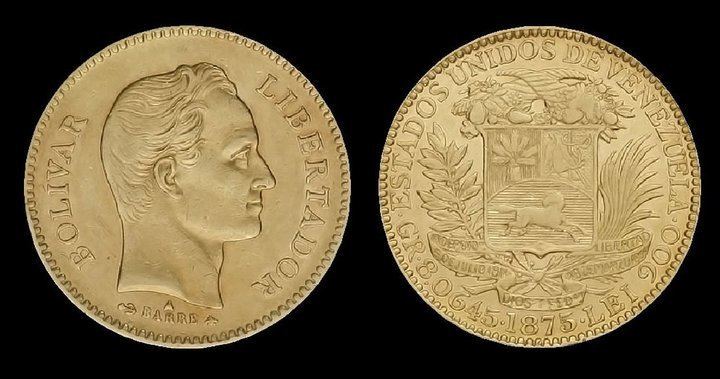 | ||
The venezolano was the currency of Venezuela between 1872 and 1879. It was divided into 100 centavos, although the names céntimo and centésimo were also used. Venezolano was also the name of two currencies planned in 1854 and 1865 (see Currency of Venezuela).
Contents
History
The monetary law of 11 May 1871 replaced the peso with the venezolano at par. The Latin Monetary Union bimetallic standard was adopted, with the silver venezolano (venezolano de plata or fuerte) of 25g .900 fine and a gold venezolano of 1.612 g .900 fine. The subsidiary silver coinage was only .835 fine, legal tender to a maximum of 40 venezolanos per transaction.
From 1 January 1872 all accounts had to be converted and expressed in venezolanos and centavos. Coins minted in conformity with the 1857 monetary law were to continue in circulation. The new coinage was minted in Paris and was introduced into circulation in June 1874. The Venezuelan coinage of 1858 had been very limited; the coinage of 1873-1877 marked the establishment of a true, modern national coinage.
The monetary law of 31 March 1879 replaced the venezolano as the monetary unit with the bolívar at 5 bolívares = 1 venezolano or 1 bolívar = 20 centavos de venezolano.
Coins
In 1874, silver 5, 10, 20 and 50 centavo and 1 venezolano coins were introduced. These were followed in 1875 by gold 5 venezolanos and in 1876 by cupro-nickel 1 and 2½ centavos.
